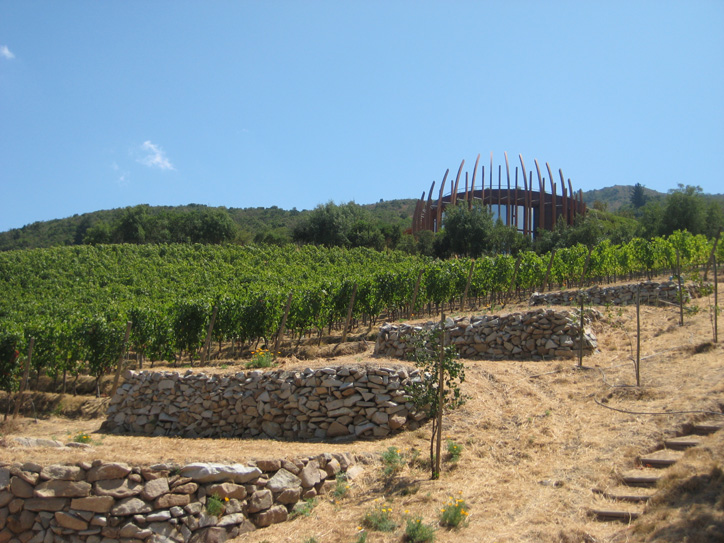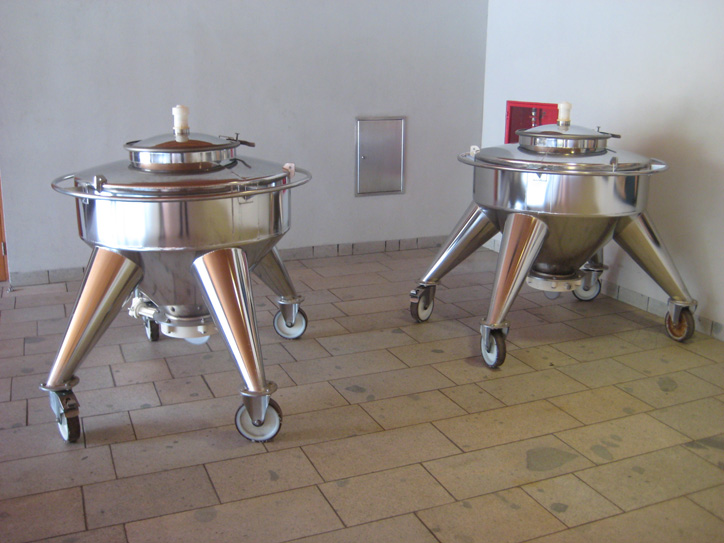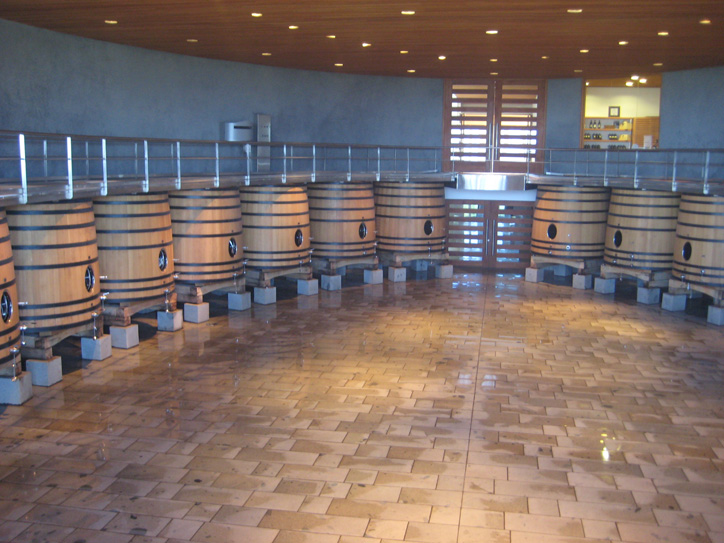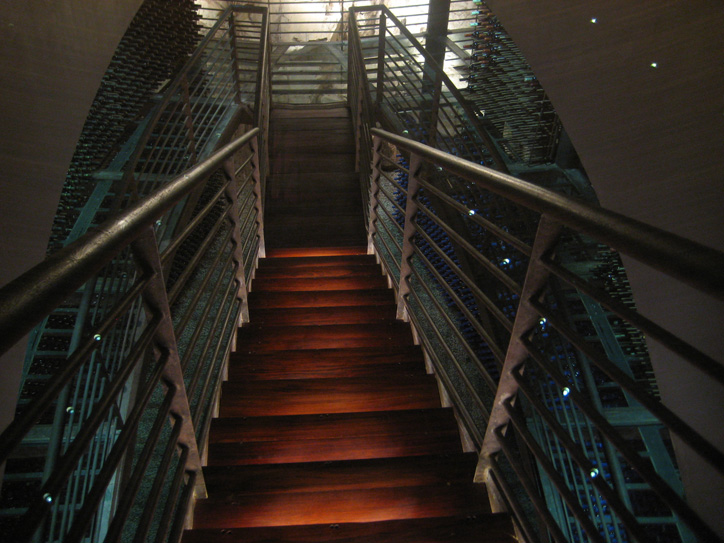
NOTE: We wrote this entry on February 26th, the fateful night before the earthquake hit Chile, but we didn’t post it right away and the next day there were obviously more important things to write about. Now it seems a shame though not to show the beauty of the place as well so without further ado, here is the Colchagua valley, pre-quake.
Santa Cruz is a small town in the Colchagua valley about 140km south of Santiago, chock-a-block with vineyards. Apparently the town came into its own only a few decades ago when a local bad boy (seriously bad boy – we’re talking world-wide arms trading and clusterbomb sales) decided that in his retirement and possibly because he couldn’t leave the country anymore without being called in front of an international court of justice, he wanted to give back to his community and help the region develop its real potential. There had always been wine in the Colchagua valley but not to the extent that it is found today with numerous vineyards, some producing award-winning vintages and many commanding eye-popping prices.
Not surprisingly, there is a lot of foreign influence. Especially the French have invested heavily into the area with Grand Manier at the head of the pack at Lapostolle and a cellar that cost 10 million dollars to build. Yes, you read that right, 10,000,000 USD. We really only went for a tour at their winery to see what they had done with all that money since vats of gold seemed to be the only way to go. Alas, no vats of gold but it was interesting nonetheless. The entire cellar is built into the side of a hill, using nature as much as possible to control temperature, humidity and make use of gravity. (PD: This might have also helped them during the earthquake. Damages to their cellar were minimal.)

The entrance to the cellar is at the top of the hill in a large hall that serves as reception but during harvest time is the place where the grapes are unloaded from the tractor and hand-stripped from their stems by almost 100 women sitting around a very long table. The loose grapes are put into small plastic containers that in turn fill two custom-made steel containers on wheels that move between the women with the grapes and the fermentation cellar where the vats are located.

Here, a grated walkway runs in a ring around the top of the vats so once the containers are rolled in, all the cellar master has to do is open the grate on the walkway above a container and the grapes can fall straight into the vat.
This is what the fermentation cellar looks like with its grated catwalk and high-tech humidifiers on the wall to control temperature and humidity:

After the initial fermentation the grapes are moved into barriques for a year. Once again gravity does all the work because the ‘first year’ cellar is located directly below and several pipes inside the floor of the fermentation cellar lead directly down into the first year cellar.
Even further below is the second year cellar where special wines spend another year in barriques for further aging, of course, gravity does its thing again and all the cellar master has to do is connect a hose and let the wine flow down into the new vats. Finally, the last floor of the building holds the family’s private cellar.

To top it all off, there’s an elevator built into the cellar.

From the four wineries we saw that day Lapostelle was certainly the grandest and most imposing but our favourite was a smaller and quieter place called Neyen. (The other two were Las Niñas, also French-owned with some quirky marketing/packaging ideas, and Viu Manent, one of the oldest wineries in the area.)
The approach to Neyen already sets the two haciendas miles apart – where we had to pass a security gate and give our name at Lapostelle, there wasn’t even a sign for Neyen except for a small wooden plate right before the turn. Luckily others had given us directions but even when we drove up to the main building, there was no sign for ‘Sales’ or ‘Tastings’. There are no tours offered and there are no t-shirts for sale. Which is not to say that the wine is cheap – au contraire – but you can tell that most of the money and dedication of the owner has gone into the product, not the surroundings. (Although those are spectacular as well, just on a more understated scale.)
Neyen prides itself on selling only one wine, which isn’t technically true since they do make special blends depending on the vintage, but they have only one main wine per year which they leave to repose for two years before putting it out on the market. We tasted the 2005 (the 2006 will be released in the next few months) which is a wonderful blend of Camenère and Cabernet Sauvignon. Unfortunately the pictures we took at Neyen all came out a bit blurry which might or might not have to do with the fact that this was the fourth winery we visited that day. But in any case, if you ever come to the Colchagua valley in Chile, be sure to stop by Neyen for a tasting. It’s money well spent.
